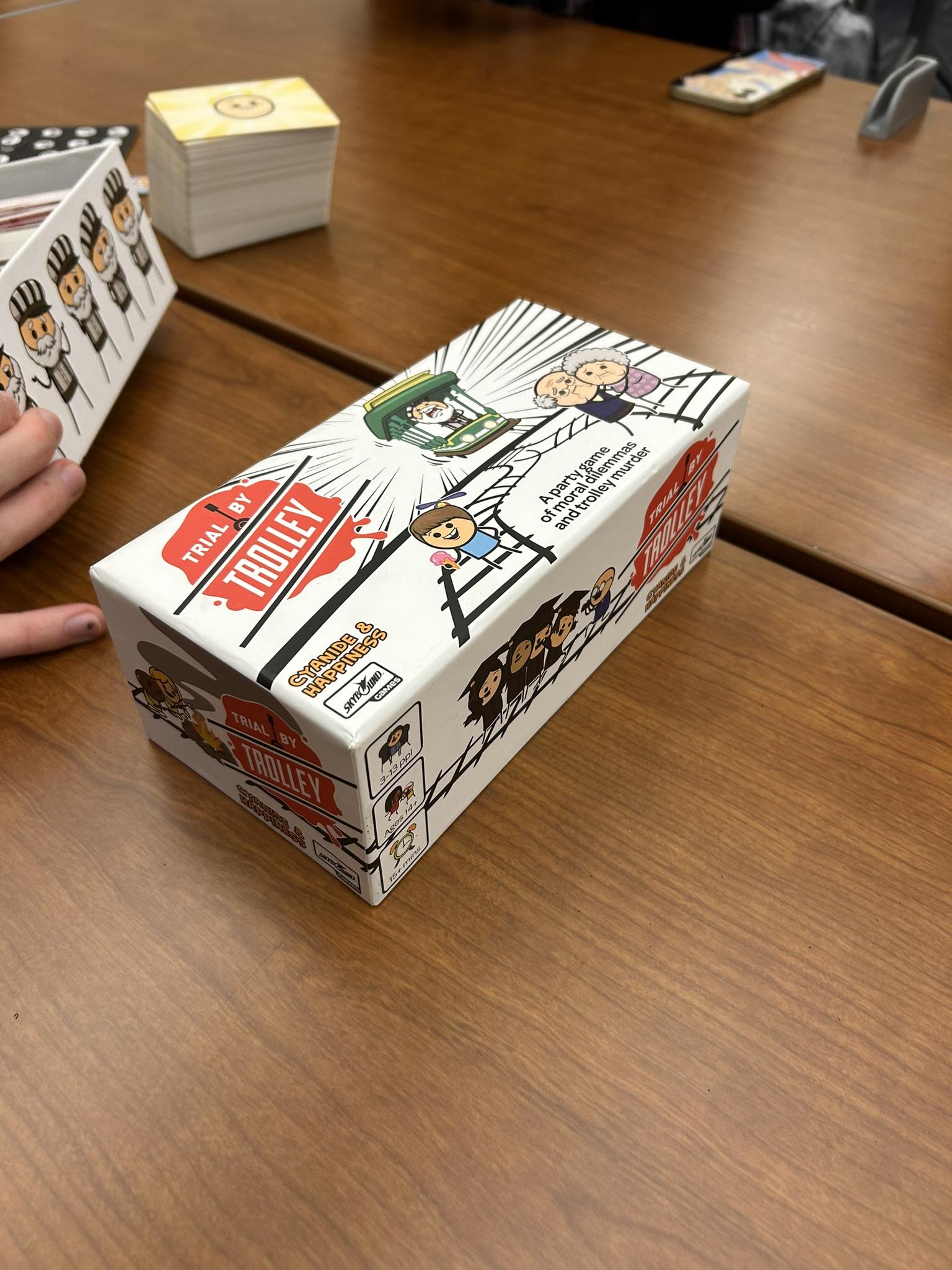Introducing the game
The judging game I played this week is Trial by Trolley. It is a board game for groups of 3 to 13 players. The game is designed by Scott Houser. Based on the content of the game, I believe the target audience is likely to be groups of adolescents or young adult friends.
Trial by Trolley is a team vs team game, though the team changes in each round of the game. The game features two trolley tracks. In each round, teams compete against each other to try to send the trolley down the opposing track. One person is the conductor and gets to decide which track to send the trolley down.
During the round, each team draws 3 angelic cards, 3 demonic cards and 3 modifier cards. The teams then take turns placing down one of each card of their choosing onto the board. Angelic cards feature characters or settings that players usually don’t want to kill, such as the local sports team or a group of children. Demonic cards feature characters that are usually evil or whose death will benefit society, such as Kim Jong Un or alien who wants to conquer the world. Modifier cards allow teams to add a qualifier to an existing card, such as “secretly wants to die”. After placing all the cards, each team argues to the conductor for why the trolley should be sent down the opposing track and not theirs. Then, the conductor has to judge the cards to decide which track to send the trolley down. Every character on the track that the trolley goes to is killed.
How is judging used and how does judging affect group dynamics and relationships?
In Trial by Trolley, judging happens at the end of each round when the conductor looks at the cards at the end of each trolley track, hears each team’s arguments and decides which track to send the trolley down. The mechanics surrounding judging in Trial by Trolley creates a lot of interesting group dynamics and relationships.
First, the cards in this game contain a wide variety of characters and situations. Many of them are very creative and humorous. All the cards also have cute or funny drawings. Although tackling difficult moral dilemmas is usually a serious and stressful topic, the creative game cards help to make the game a lot more light-hearted. It creates a dynamic where players are encouraged to think about unorthodox ways to argue for why the trolley should kill the opponent’s characters over their own, instead of being focused on the difficult moral problems and guilt surrounding making these decisions. When I played this game at first, I was expecting it to be a difficult game where I have to make hard choices because of its setting, but it turned out to be a lot more casual than I thought. The modifier cards were particularly effective in allowing teams to get creative and add an unexpected twist to the game. For example, in one round my team put down “summer camp with deaf kids” for our angelic card, hoping to elicit the sympathy of the conductor. However, the opposing team puts down the “secretly serial killers” modifier on our angelic card, which made the situation slightly less sympathetic. The creative and funny card design helps establish the aesthetic of expression very well. When players are able to get past the underlying setting that they are in fact killing hypothetical people, the game becomes one of exercising creativity and bullsh*ttery.
Second, the game uses a rotating team system. Each player takes turns being the conductors and other players rotate across teams throughout each round. This means that every round is played with a different conductor and team members. This makes the game more interesting. Since players have different preferences for who they want to kill or save, having different conductors each round makes the objective of each round change, as teams have to choose cards that appeal to the preferences of the conductor for that particular round. For example, in some rounds we tried to select cards that maximize overall utility, such as a philosopher who can create world peace. In another round we selected cards that provide benefits for the conductor, such as an outlaw with a bounty, which would reward the conductor with money if they chose to kill the outlaw. Having rotating teams also allows players to form relationships with different people in each round, which makes this a great game for meeting new people.




